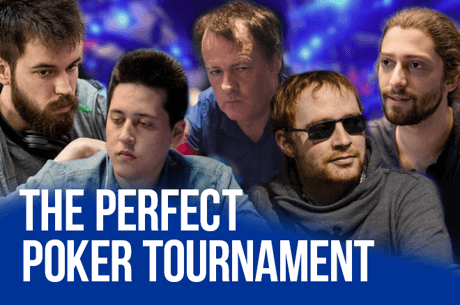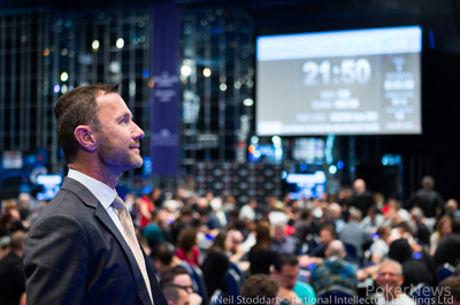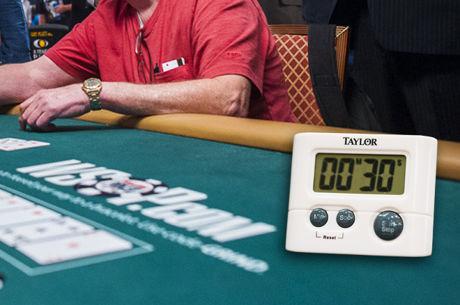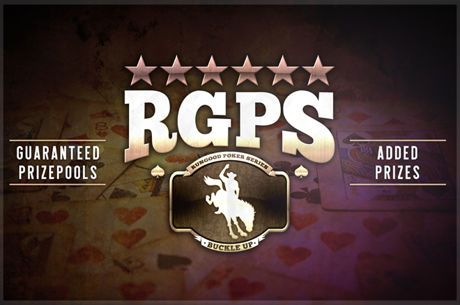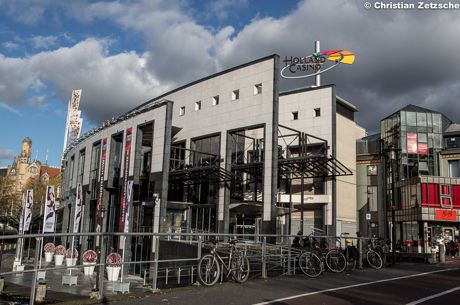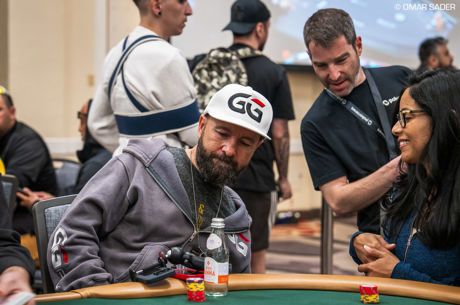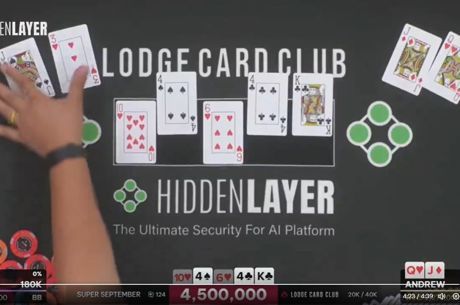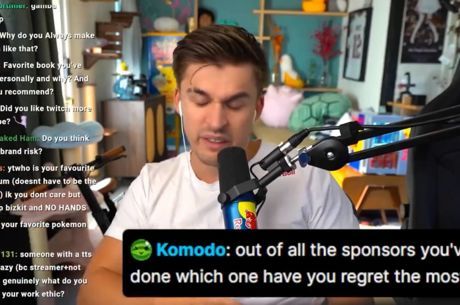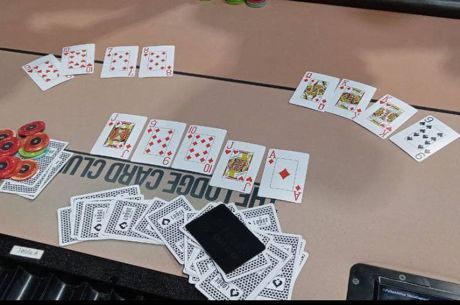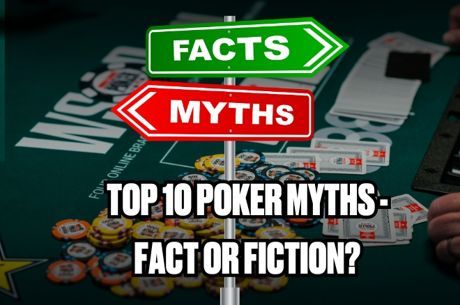Top 10 Stories of 2018, #2: Big Blind Ante Becomes the Standard

This year's Top Stories are brought to you by Upswing Poker. If you want to improve your skills and confidence at the table, look no further than the free resources and premium training courses on upswingpoker.com.
When structure-conscious poker players headed to the PokerStars Live website to check out the format for the �10,300 High Roller that opened action for 2018 PokerStars European Poker Tour Prague, they found a sheet that included a level with 100/200 blinds and a 25 ante. Other similar-looking levels followed.
2018 will be remembered as the year the big blind ante went from adolescence to full maturity.
Twenty years, ten years, even one year ago, that would not have looked at all out of place. Nobody would have had a second thought about such a structure. It would have seemed as natural as receiving two cards per hand in no-limit hold'em or hearing a player philosophize about how ace-king was a drawing hand and overrated.
Instead, in the age of the big blind ante, it struck one as an oddity. An old-school small ante? Who did that? Particularly in a higher buy-in event, it was unusual to see.
Sure enough, the structure was quickly corrected. No, of course there would be no pointless 25-chips serving only to slow down the action and allow players to place bets that make the eyes roll. Of course the big blind ante would be in use. That 100/200 level would use a 200 consolidated ante because that's just the way poker tournaments are nowadays.
About 18 month after its inception, the big blind ante has proliferated to the point where it's nearly industry standard, and 100 percent adoption seems inevitable.
A Quick History Lesson
The big blind ante as a concept dates to April 2017, when ARIA Poker Tournament Director Paul Campbell was approached with the idea of consolidated antes for the regularly run high-stakes tournaments by Cary Katz. Katz had participated in cash games that used an ante in addition to blinds to juice up the pot and encourage action, although the ante came from the button.
Campbell didn't mind the idea and gave it a trial run, moving the ante to the big blind to ensure there would still be antes in play every hand. The high-stakes regulars immediately warmed to it.
"[They] really embraced it as a superior format for their events," Campbell told PokerNews in a January 2018 interview.
Nobody loved the idea more than World Poker Tour Executive Tournament Director Matt Savage. Savage gave the format a shot in an L.A. Poker Classic preliminary event and was thrilled with the implementation and response.
The World Series of Poker followed suit with something of a dipped toe approach, adding a specifically named big blind ante events at various price points on the 2018 schedule to see how different subsets of players responded. They even tested it out on the WSOP Circuit in the spring with the high roller events.
Implementation Hurdles and Industry Disagreement
Just because every major poker tour decided to give consolidated antes a shot by some point in 2018, that doesn't mean things went smoothly or there was any kind of consensus on best practice implementation.
From the beginning, some debate existed about where the ante should come from; the button or the big blind. While the big blind seemed to be the most widely accepted way of doing things, partypoker LIVE polled players and went with a button ante in their massive MILLIONS events.
Then there was the thorny issue about whether the ante should be posted before the big blind or vice versa. Under the former method, very short stacks in the big blind have the potential to only break even on a victorious all-in hand if they only have enough chips to cover the ante but not the big blind. The latter method does them a bit of a favor but runs contrary to the way poker has always been played.
Most recently, debate has centered around whether to reduce the size of the ante when tables get short-handed. Led by Savage, most tournaments appear to be keeping the amount consistent despite some calls for change led by Allen Kessler's incessant Twitter drum-beating. Again, partypoker stood as the outlier, halving the ante to the amount of the small blind when tables had three or more empty seats.
The State of the Anteing Union
In general, people are slow to accept change. Look no further than practically any major website redesign. People get comfortable with routine, and responses typically always skew negative when routine is disrupted with the unfamiliar.
Given that, it's somewhat surprising and maybe a little impressive that adoption of the big blind ante has been as widespread and quick as it's been. Less than two years after it first appeared in a tiny �� at least in terms of field size �� set of events in Las Vegas, the big blind ante is almost everywhere.
While initially a format geared toward the high-stakes community, ARIA TD Campbell said in January he believed enough benefits existed to introduce it to the wider audience and that the industry would gradually arrive at a set of best practices. His words have proved prophetic.
PokerStars Live and WPT events have completely adopted the big blind ante, while partypoker made the switch from button antes at its recent Caribbean Poker Party festival in November. The WSOPC has trickled them down from just the high rollers to some $600 events as well. Other small-stakes series like the Wynn Summer Classic and Master Classics of Poker showed they can be used with no issue and popular acceptance at any buy-in level.
A few stragglers like Mid-States Poker Tour continue to use old-school antes, but it's becoming more and more difficult to find such events.
Not everything has been ironed out, as shown by the continued debate over whether to reduce the antes short-handed. Savage and partypoker's Mike Sexton agreed to discuss the issue over lunch, and it remains to be seen if either side will budge.
The Future of Anteing
Minutiae aside, the forecast for the big blind ante has gone from partly cloudy to sunny and clear in less than a year. Where it was once looked upon with some skepticism, players and operators have nearly universally embraced it.
A close friend of this author, who travels to Las Vegas every summer to grind various tournament series, encountered the concept for the first time in an ARIA event and reported back with a succinct review not ten minutes after taking a seat.
"Big blind ante is the only way to play poker," he said.
Soon, that statement may be more fact than declaration about best practice. Certainly, there's no going back for those who have made the switch. Olivier Busquet starkly illustrated that in a March Tweet.
"If you're unsure about the [big blind] ante, imagine [it] were the status quo and the discussion were to change it to the current system," he wrote. "It would be absurd �� break up the ante into small pieces and force each player every hand to do it? This helps show status quo bias."
If you��re unsure about the bb ante, imagine that bb ante were the status quo and the discussion were to change it t�� https://t.co/w7msSu4zw6
— Olivier Busquet (@olivierbusquet)
The last frontier may be 100 percent adoption by the WSOP. If a Twitter poll from late November is any judge, players are ready and willing �� a full 80 percent voted in favor if its use in all no-limit events in 2019
While that bridge may be crossed next year, 2018 will be remembered as the year the big blind ante went from adolescence to full maturity. It spread more quickly than a meme among a group of teenagers whose growth it resembled, changing the way the game is played. That makes it one of the biggest stories of the year.
Upswing Poker gives you access to the tactics and strategies that world-class pros wish they could teach their younger selves. Check out the free resources and articles on upswingpoker.com to level-up your skills without spending a dime.
Top 10 Stories Since 2011
Top 10 Stories of 2011
- Black Friday
- Full Tilt Poker
- PokerStars Back to Business After Black Friday
- Phil Ivey
- The Year of Seidel
- Ben Lamb Makes His Mark
- Grospellier and Cody Complete Poker's Triple Crown
- Forming the Epic Poker League
- Second Place Goes to �� Phil Hellmuth
- The Big One for One Drop
Top 10 Stories of 2012
- PokerStars Acquires Assets of Full Tilt Poker
- Phil Hellmuth Wins Two Bracelets, Including WSOP-E Main Event
- Howard Lederer Breaks Year-Long Silence in the Lederer Files
- The Big One for One Drop
- #5a, Greg Merson Wins the WSOP Main Event and POY Award
- #5b, Dan Smith Dominates
- Greg Raymer Wins Four Heartland Poker Tour Titles
- Marvin Rettenmaier Wins Back-To-Back WPTs and Much More
- Baumann and Hille Bubble WSOP Main Event Final Table
- Phil Ivey Returns in a Big Way
Top 10 Stories of 2013
- The Launch of Regulated Online Poker in the U.S.
- Daniel Negreanu's Massive Year
- German Domination
- Full Tilt Poker Repayment in the U.S.
- Drama Involving Past WSOP Main Event Champs
- Controversial "First Card Off the Deck" Rule
- World Series of Poker Circuit Grinders Dominate
- The Seminole Hard Rock Poker Open $10 Million Guarantee
- Canada Crushes at the WSOP
- Ivey, Kagawa, Smith, and Others Face Legal Trouble
Top 10 Stories of 2014
- PokerStars Acquired By Amaya and Makes Significant Changes
- Phil Ivey Endures More Legal Drama
- Christian Lusardi and the Borgata Counterfeit Chip Scandal
- Daniel Colman's Massive Success and Controversial Year
- Passing of Strassmann, Brown, Korfman, Sartori, Elvis Joe
- Vicky Coren Mitchell Becomes First Two-Time EPT Champ
- Yong, Phua, Others Involved in World Cup Betting Scandal
- Ultimate Poker Closes in New Jersey and Nevada
- Tony G Leaves Poker for European Parliament
- Darren Elias Wins Back-To-Back World Poker Tour Events
Top 10 Stories of 2015
- Online Poker Changes at PokerStars and Full Tilt
- Negreanu��s Run and McKeehen��s Dominance in WSOP Main Event
- WSOP Highs and Lows; Colossal Records, Heads-Up Controversy
- The Loss of David Ulliott, Chad Batista, and Others
- Ivey Wins 3rd Aussie Millions $250K, Is Online's Top Loser
- Old Guys Still Got It - Hellmuth, Juanda, Seidel Score Big
- Andy Beal Returns to Vegas to Face Todd Brunson
- GPI Player of the Year Race Comes Down to the Wire
- PokerStars Approved to Operate in New Jersey
- GVC Buys bwin.party, Ourgame Buys WPT
Top 10 Stories of 2016
- Qui Nguyen Wins the 2016 World Series of Poker Main Event
- Once-In-a-Lifetime Heater for Fedor Holz
- The Mercier Bracelet Bets That Shook the Poker World
- Big Changes at PokerStars
- William Kassouf Dominates ESPN
- Prop Bets Grab Headlines
- Chris Ferguson and Howard Lederer Return
- Online Gaming Marketplace Consolidates
- GPL Holds Season 1
- Big One For One Drop Open to Recs Only
Top 10 Stories of 2017
- Chris Ferguson Wins World Series of Poker POY
- John Hesp Reignites Poker Excitement During WSOP Main Event
- Doug Polk Wins One Drop and the Internet
- PokerGO Changes the Way WSOP is Consumed
- Online Poker Advances in the U.S.
- Fedor Holz and the Germans Continue High Roller Dominance
- Phil Ivey Loses $19 Million in Court Battles
- partypoker's Resurgence
- Australia Loses Fight for Legalized Online Poker
- Computer Beats Poker Pros in 'Brains vs. AI'
In this Series
- 1 Top 10 Stories of 2018, #1: Justin Bonomo's $25 Million Year
- 2 Top 10 Stories of 2018, #2: Big Blind Ante Becomes the Standard
- 3 Top 10 Stories of 2018, #3: Famous Pros Retire
- 4 Top 10 Stories of 2018, #4: Joe Cada's Amazing WSOP Including Two Bracelets and Main Event Run
- 5 Top 10 Stories of 2018, #5: Jake Cody Puts it All on Black, Goes Viral
- 6 Top 10 Stories of 2018, #6: Ivey Returns to Tournament Poker
- 7 Top 10 Stories of 2018, #7: Gordon Vayo Versus PokerStars Lawsuit
- 8 Top 10 Stories of 2018, #8: Ferguson Posts "Apology" Video
- 9 Top 10 Stories of 2018, #9: partypoker Breaks Records Live and Online
- 10 Top 10 Stories of 2018, #10: PokerStars' Platinum Pass Give-Away
- 11 Top 10 of 2018: What Didn't Make the Cut


